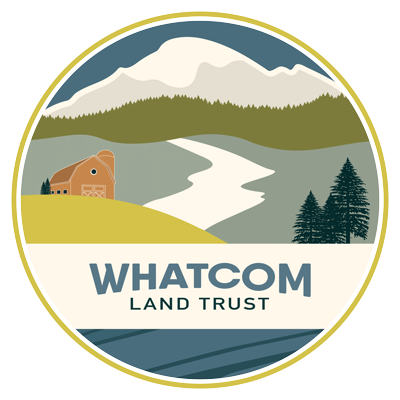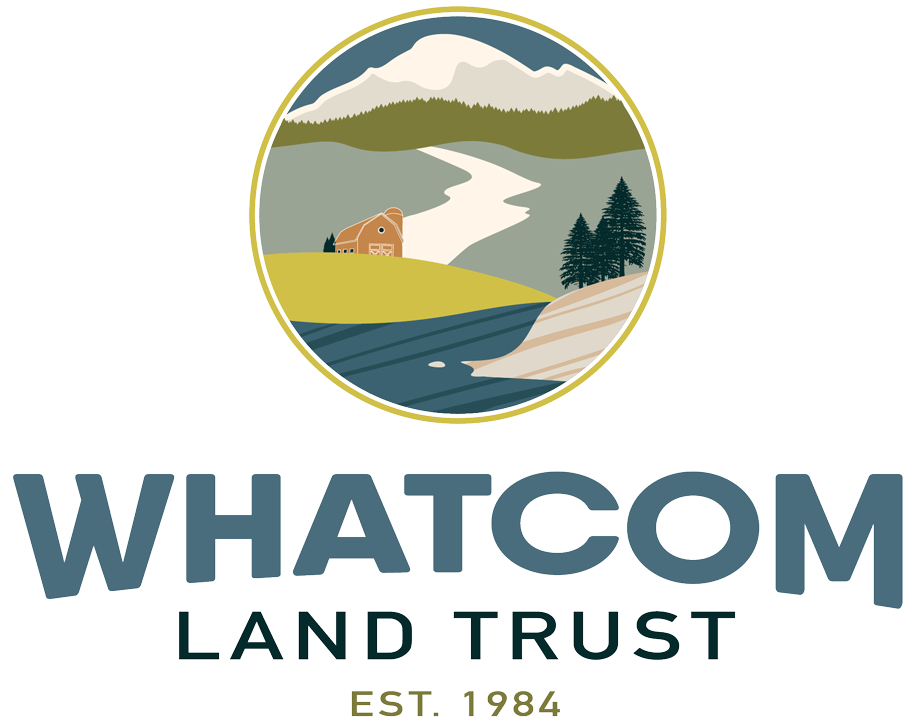Farms and Fish: Balancing the bounty of our lands and waters
At this time of year when we reflect on all we have to be thankful for and look for ways to give back, the Nature of Whatcom County tops our ‘gratitude list’. Take salmon and family farms, for example. Almost anyone living in Whatcom County knows that we love our native salmon and we consistently support local agriculture practices. Thriving farmer’s markets in Bellingham, Ferndale, Lynden, Blaine and other locales prove how much we care about keeping the agricultural lands of Whatcom County productive, protected and bountiful. We take pride in finding balance between the natural systems that support our local bounty of fish and farms, a balance that represents our conservation values and shared vision for a healthy, prosperous Whatcom County.
A legacy of stewardship – past, present and future
For centuries, the native people living in this area have forged a stewardship ethic grounded in principles of gratitude and appreciation. An abundance of natural resources – streams full of salmon, lands for growing healthy food, cedar trees for shelter and transportation, are utilized as gifts and responsibilities to pass to the next generation.
For centuries, the native people living in this area have forged a stewardship ethic grounded in principles of gratitude and appreciation. An abundance of natural resources – streams full of salmon, lands for growing healthy food, cedar trees for shelter and transportation, are utilized as gifts and responsibilities to pass to the next generation.
Forestry, farming and fishing
The physical make-up of the County contributes greatly to its success and diversity. The forested foothills provide excellent shade and stability to support wildlife habitat as well as livelihoods. These hillsides then slope down and level out into what has become fertile agricultural lands. Rivers and streams flow throughout the merging of these landscapes and with them come the salmon and other wildlife. They migrate back from the ocean, through the larger forks of the Nooksack River and settle into the smaller streams and creeks to their birthplace to spawn. Without these landscapes, Whatcom County would not be the same.
History has proven that the three dominant land uses of the County – forestry, farming and fishing can each thrive in coexistence as long as there is flexibility and collaboration from the community.
South Fork Nooksack River Valley
The area surrounding the South Fork of the Nooksack River is an excellent example of a complex geography that supports a diverse community. Nestled between the eastern slope of Stewart Mountain and the foothills of the Cascades, the South Fork Nooksack Valley (SFNV) is dominated by forest, floodplain and wetland habitats. The snow-fed South Fork Nooksack supports all five species of Pacific Salmon as well as eagle and elk habitat. Commercial forestry and farming are the predominant land uses which means that balancing the needs of salmon, forestry and farming, as well as a healthy of the South Fork Nooksack watershed, is critical.
Finding Creative Solutions Together in the SFNV Watershed
One important step South Fork Nooksack Valley residents have undertaken is to convene the SFNV Watershed Education Committee. Concern over the urgency to address current and future water use and quality issues has rallied the historically cohesive SFNV community to collaborate and educate themselves to reach consensus and increase selfdetermination of water issues. In addition to local property owners, including Whatcom Land Trust, other partners and nonprofit organizations providing technical expertise include Acme/Van Zandt Flood Advisory Committee, Evergreen Land Trust, Washington Water Trust, Whatcom Family Farmers, Nooksack Tribe, and Whatcom County Planning Department.
This project is a wonderful example of local people working to find local solutions. Moving forward, Whatcom Land Trust’s role in the SFNV Watershed Education Committee will be important and can serve to rally support. Our properties and restoration projects show how it is balance the needs of forestry, farming, floodplain mitigation, water quality and wildlife protection in partnership with the SFNV community in general to achieve mutual objectives and actions.
Over the next year Whatcom Land Trust will join the SFNV Watershed Education Committee in creative community conversations around watershed issues, seeking solutions and models that create mutual benefit while addressing the cultural, economic and environmental needs and challenges of the SFNR community. The goal is to create a living framework that incorporates the most effective tools and techniques to accomplish the Group’s objectives.
Partners in protecting and preserving sustainable land use
This is a good example of how Whatcom Land Trust works in partnership with private community groups, as well as both the Lummi and Nooksack Tribes, the Department of Natural Resources, and Whatcom County to achieve complementary conservation goals. With tools and resources to help facilitate and expedite complex transactions, the Trust’s role in such collaborations promotes sustainable land use for multiple partners simultaneously.
Another good example is Whatcom Land Trust’s partnership to manage Whatcom County’s Agricultural Purchase of Development Rights Program (Ag PDR). This program is designed to protect the future viability of farmland throughout the county by strategically protecting key parcels of land that would be otherwise developed. Whatcom Land Trust contracts with the County to manage conservation easements on properties that participate in the Ag PDR program. Conservation easements are voluntary, legally binding contracts which limit the amount of future development on the property as well as protect the future viability of its land and water resources.
Whatcom Land Trust working to preserve a legacy of gratitude and appreciation
Whatcom Land Trust is diligently working to balance the needs of farms, forestry and fish throughout Whatcom County. Through collaboration, the Trust partners with property owners with tools and techniques to find sustainable long-term solutions. Whatcom Land Trust currently co-holds with the County 18 other conservation easements through the Ag PDR program totaling 905 acres of protected farmlands. Whatcom Land Trust either owns or has a conservation easement on 19 properties in the SFNR valley. The Trust works to support local farms by leasing land for agricultural use. The challenge of balancing resources in the South Fork Nooksack River Valley may be large, but Whatcom Land Trust is committed to helping find local solutions which will ensure that the bounty of Whatcom County stays intact for generations to come.
Working together, we can help to manage our natural, land and water resources with gratitude, and with a stewardship ethic that appreciates farms, fish and forests as gifts and responsibilities to pass to the next generation.


